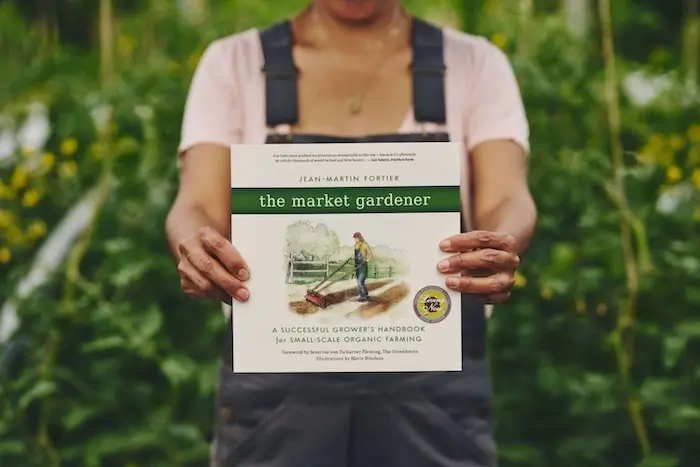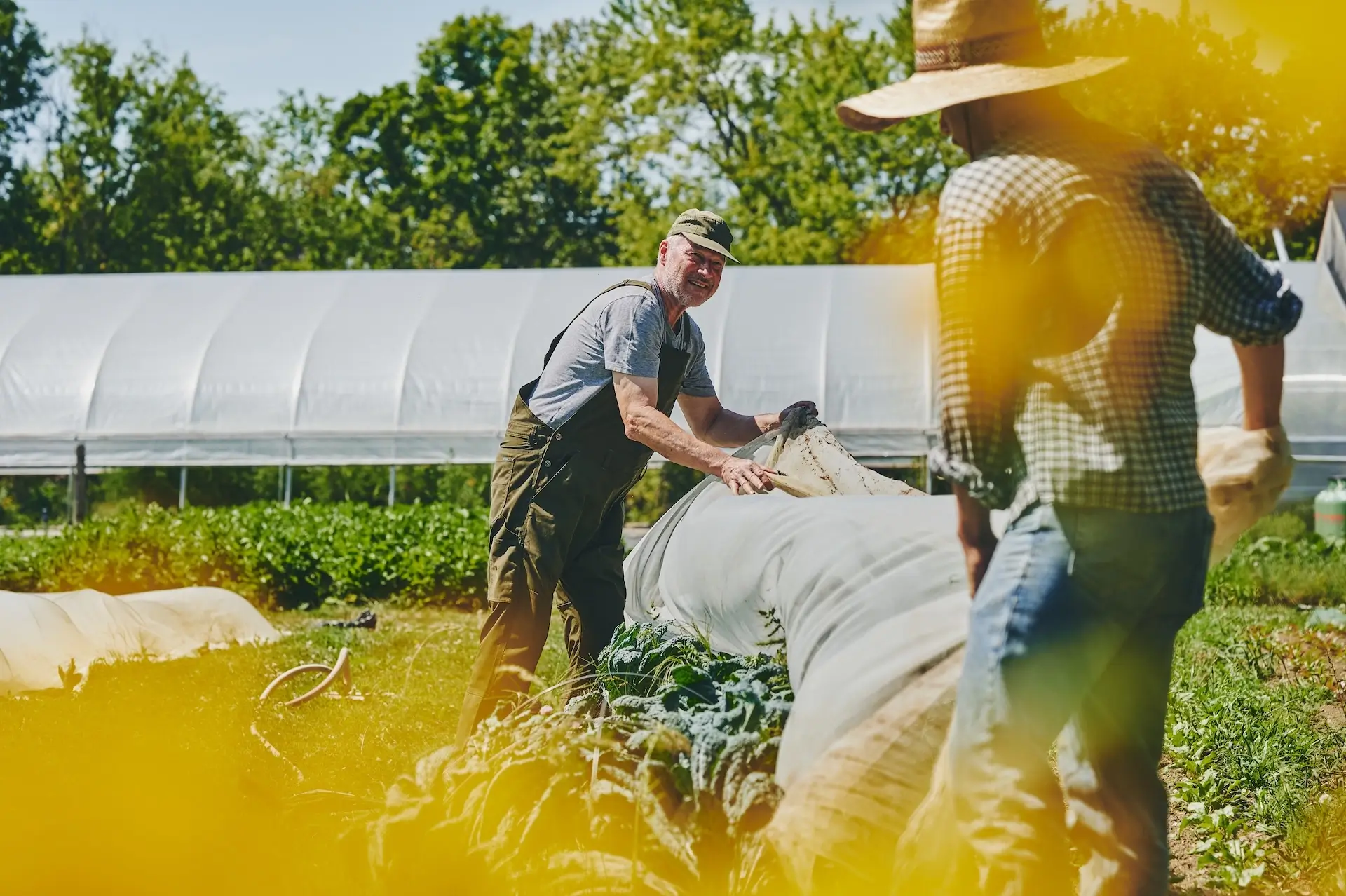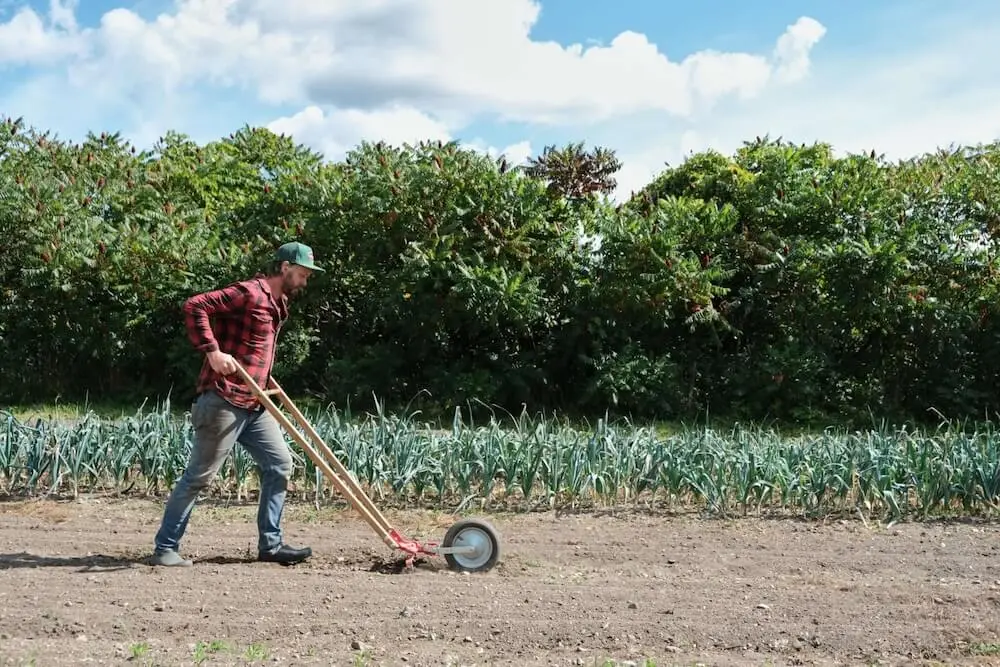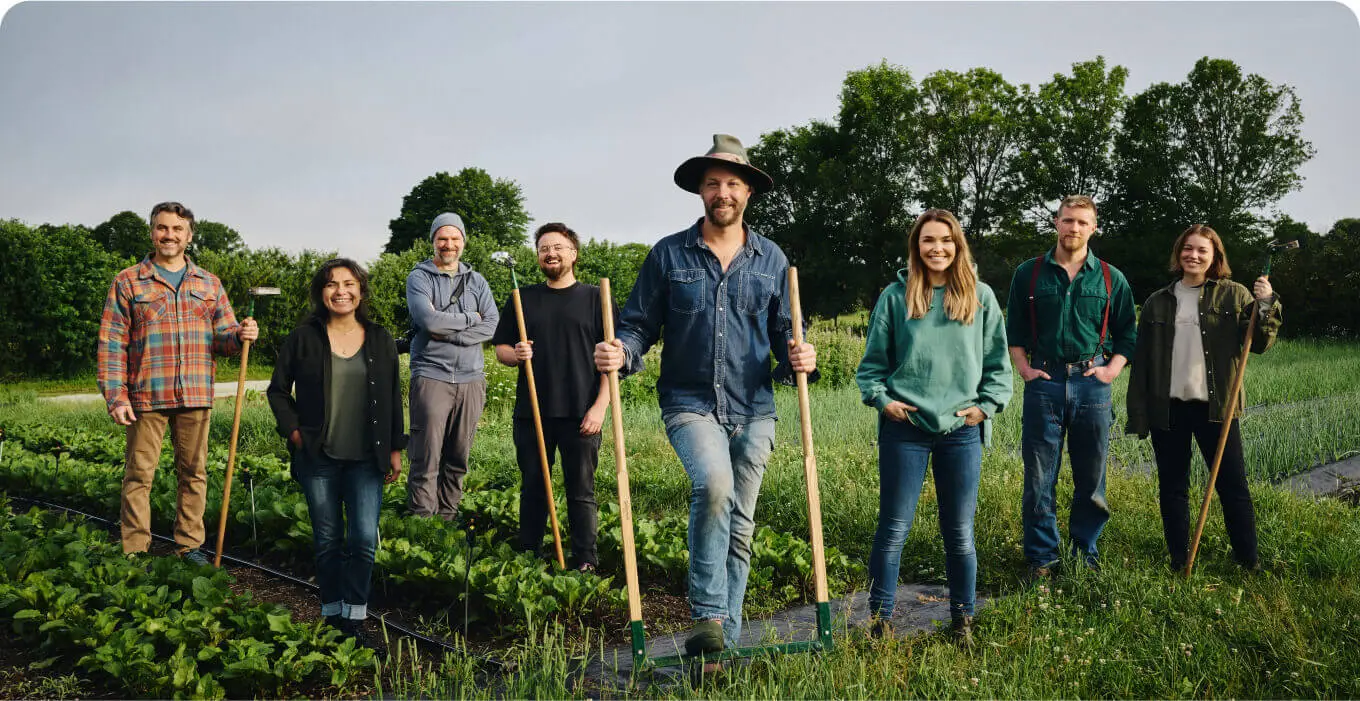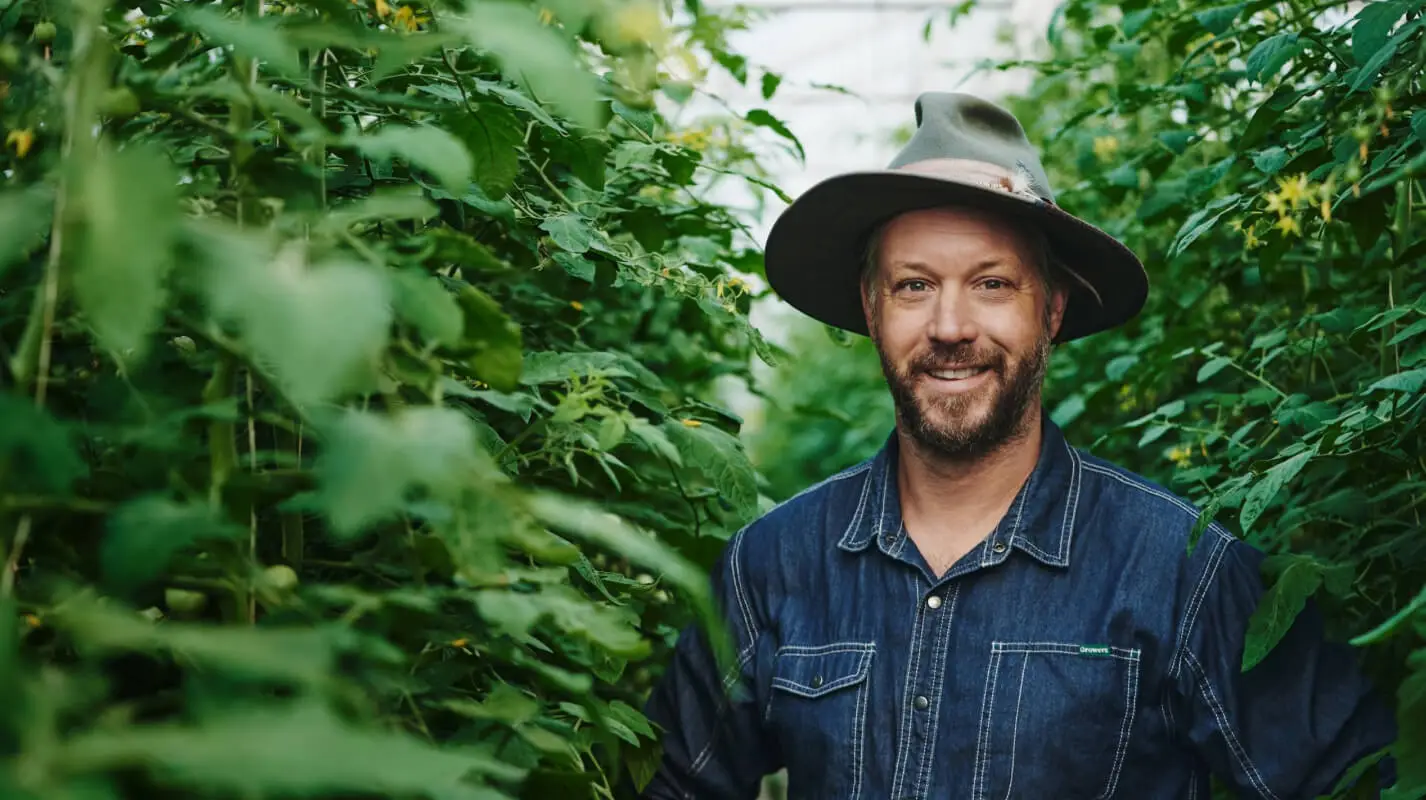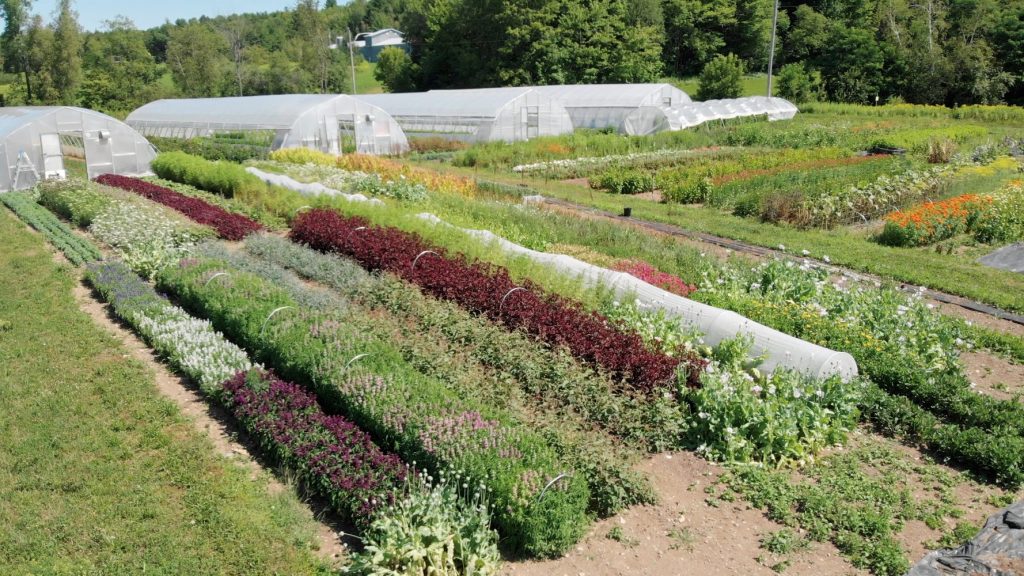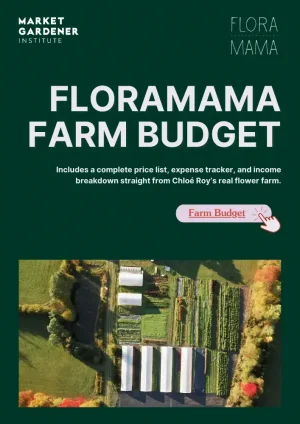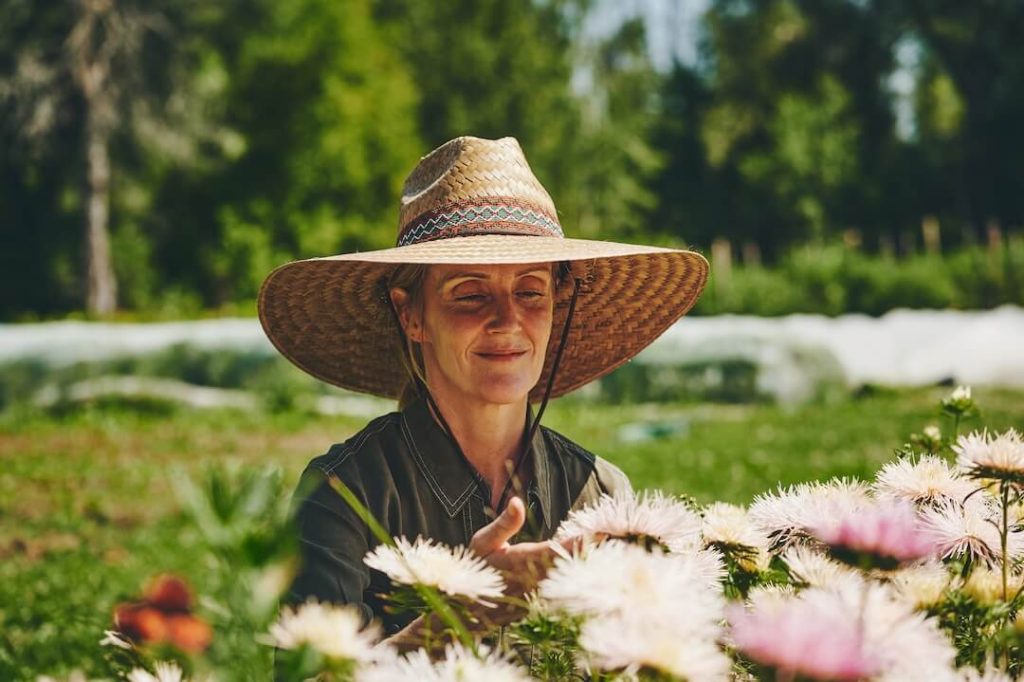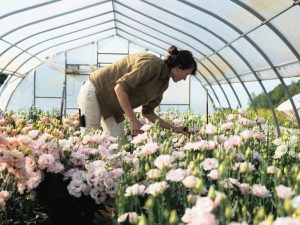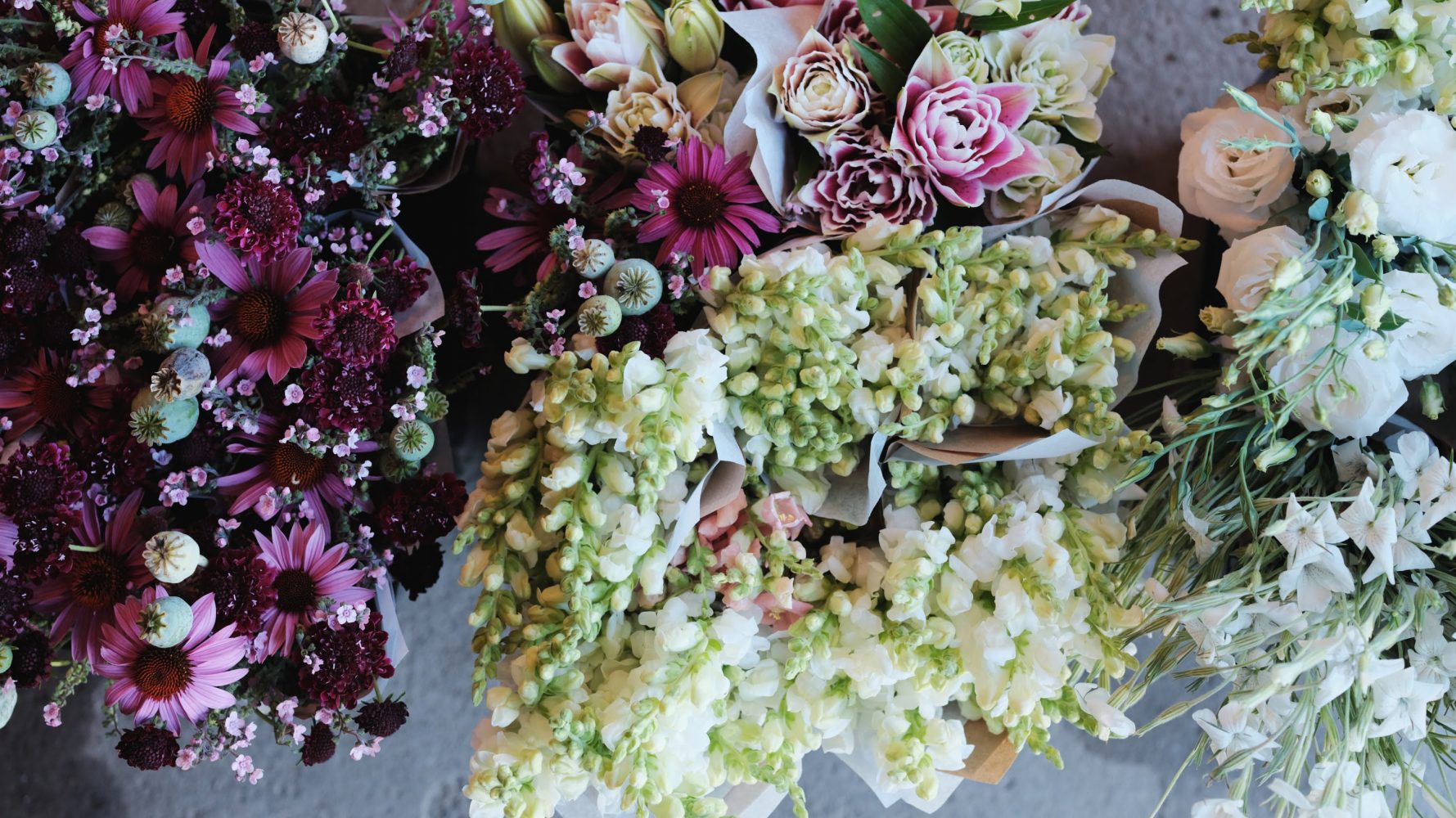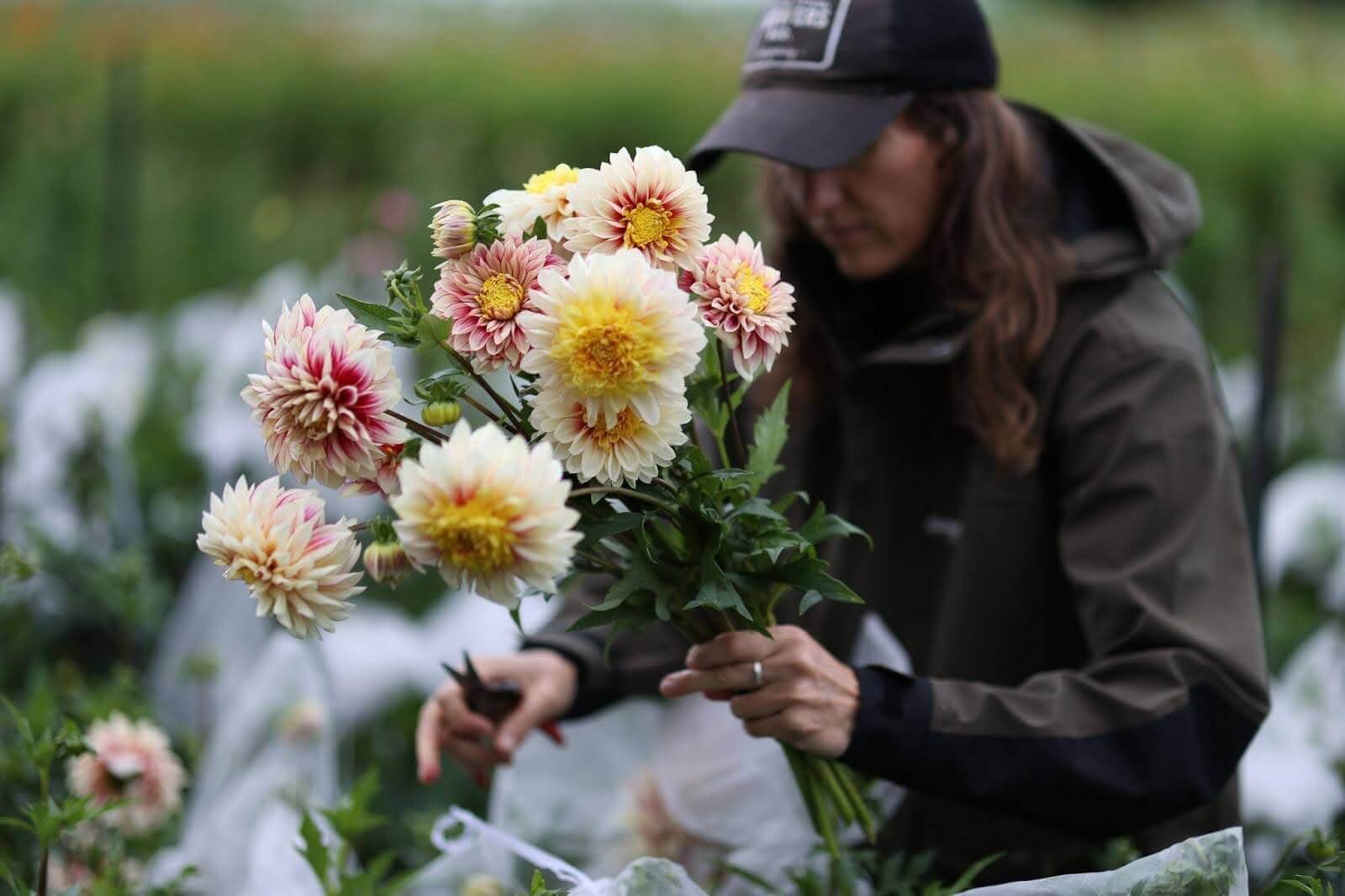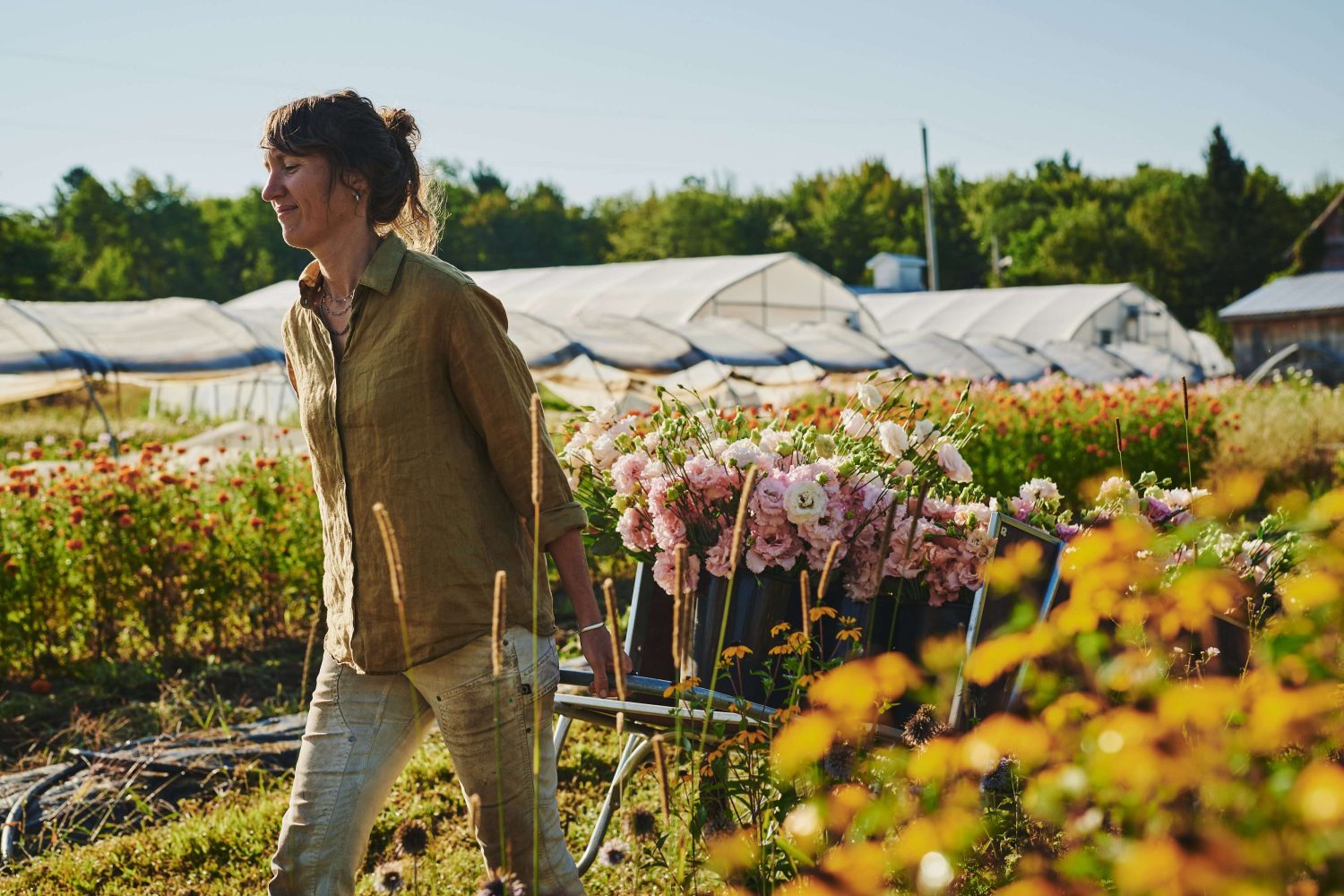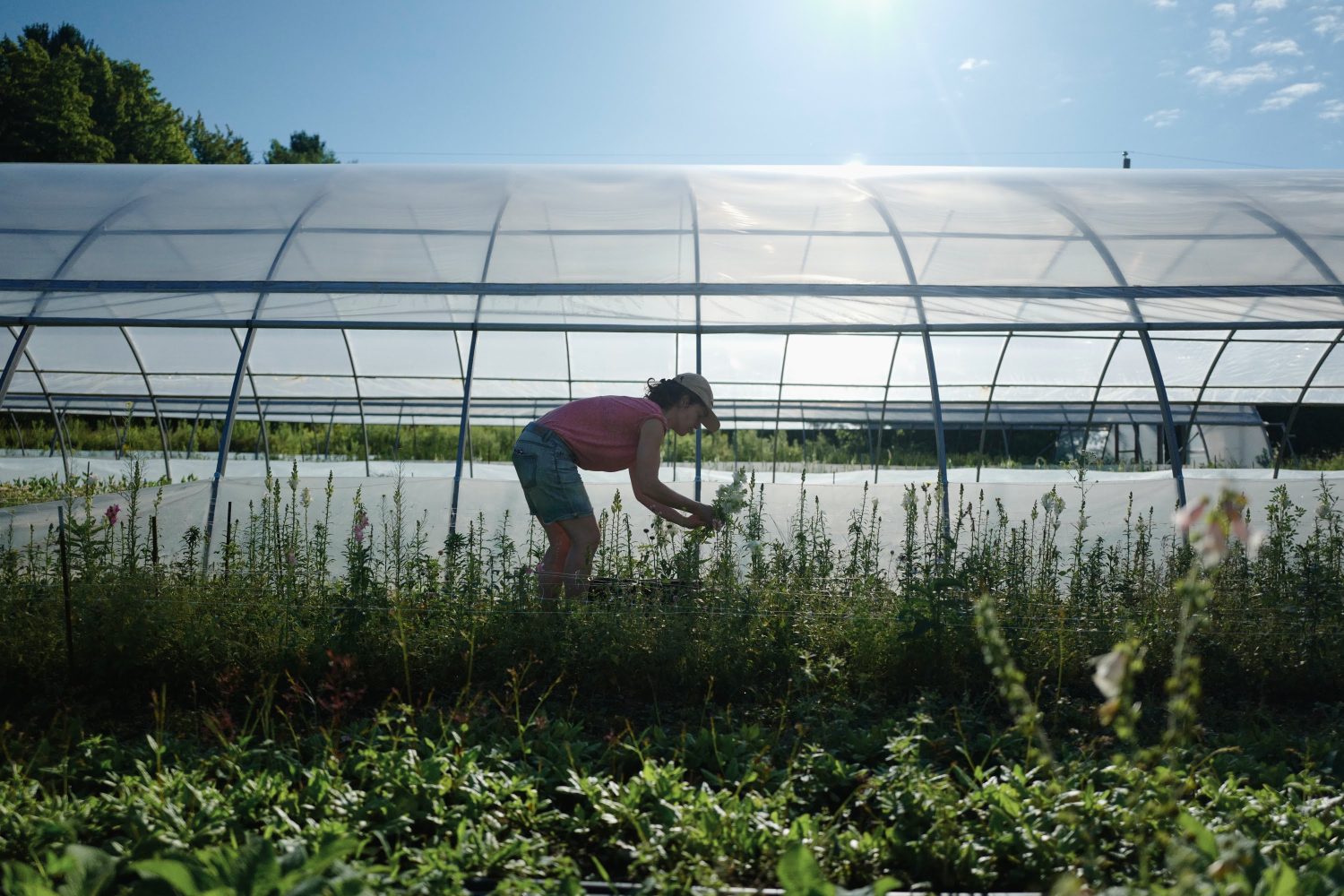Starting a cut flower farm is an endeavor that has gained popularity in recent years, appealing to those eager to blend their love for nature with entrepreneurial aspirations. Whether motivated by their aesthetic appeal or their profit potential, establishing a flower farm offers distinct possibilities. For many, starting a flower farm business feels like a natural extension of their passion for flowers combined with the dream of independence. If you’re considering starting a cut flower farm, think about how it fits your lifestyle and goals.
However, stepping into the floral farming sphere is not without its challenges. It demands careful thought, strategic planning, and a wealth of knowledge to ensure a successful start and sustainable growth. Even if every farm is different and has its own unique model, here are pivotal steps and considerations to help you lay the groundwork for a prosperous flower farm. If you’ve ever wondered how to start a cut flower farm from scratch, these steps will guide you.
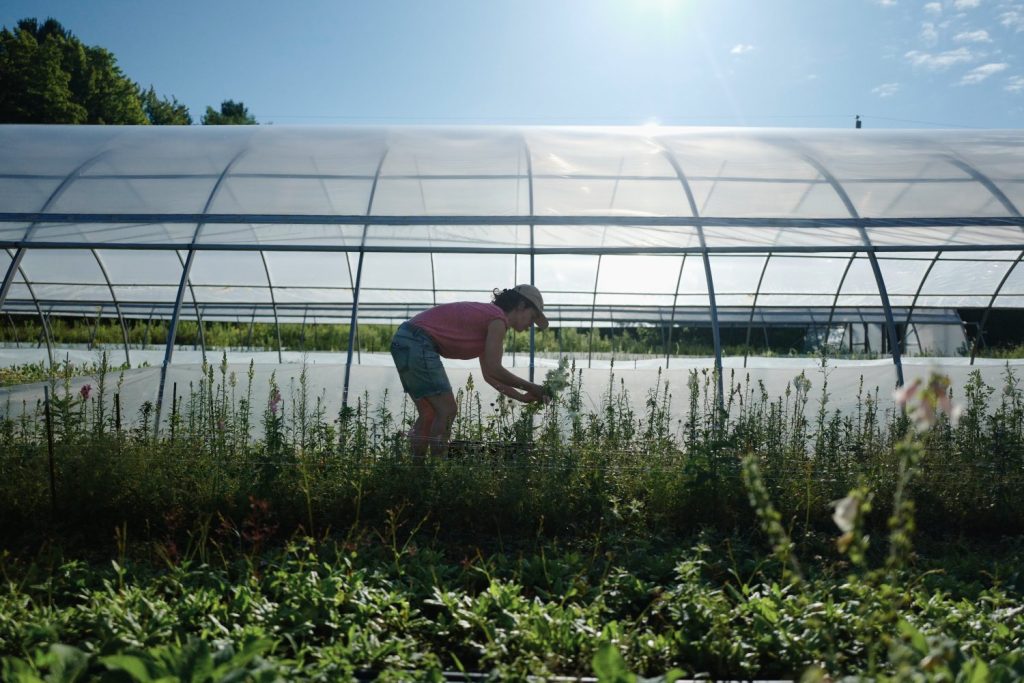
Planning: The First Step to Start A Flower Farm
1. Clarifying Your Vision
Before embarking on your flower farming journey, it’s vital to reflect on your aspirations. Those interested in starting a cut flower farm should ask whether they prefer small-scale independence or a larger commercial model. Are you aiming for a large-scale farm with employees or a smaller, self-managed project? Your decision will shape every facet of your business, from its initial setup to its operational strategies. There is no right or wrong answer, but the money, time and energy leading to it are quite different. I like to think about it as a crossroad in which you choose the path leading to the final destination you want to be. Do you see yourself (actually picture yourself!) managing a big business that has to go fast, with a team and focused on big harvests and sales, or is it a small business focused on small quantities going out here and there? It might seem like an odd question to ask yourself, but it’s two completely different worlds. Again, both are good! I know I wanted the big one, without a doubt.
Before planting seeds, cultivate your ideas on paper by developing a clear, detailed business plan. A solid plan is the backbone of how to start a flower farm business with clarity and confidence.
2. Be For Real
Here, I might lose some of you, but it’s the reality. Flower farming is HARD. It is not for the faint of heart and if you think you would like to start a flower farm because you love flowers, I have a question for you.
Do you love playing with flowers, or do you love farming, marketing and selling flowers?
If you love mostly playing with flowers and arranging them, you might want to look into floristry instead of flower farming.
Because, to be honest, in flower farming, you actually have time to enjoy and play with flowers outside of the 40-60 hour workweeks it takes to actually have them in hand. Of course, we work with flowers, we get to be with them every day, and we get moments of pure bliss witnessing their beauty, but these moments are short! They only happen while doing something else, like harvesting, watering, weeding, etc. Other than that, it’s after work, and to be honest, I personally am done with flowers after my working week to come back to the fields and harvest myself a bunch or make an arrangement. But that’s me. So yes, flowers are a daily part of flower farming, but as a product. A beautiful product indeed, but still, that primarily needs to be well-grown, harvested and sold rapidly.
In other words, flower farming is first and foremost owning and managing a complete and complex business. And the goal of a business is primarily to make money, be profitable and have a good quality of life.
Another essential information is that in flower farming 50% is growing, so building and fixing stuff, crop planning, seeding, preparing the soil, planting, weeding, watering, harvesting, managing pests and diseases, etc. In other words, not only maintaining things alive but actually being committed to growing thriving crops of excellent quality throughout the season, every year. The other 50% is selling so trying to make the right decisions (at least a 100 times a day), sharing the vision, hiring employees, training employees, selling, marketing, taking pictures, making the designs, delivering, budgeting, paying salaries, managing social media, making and updating a website, filling grants, managing customer service, offering a safe and joyful experience for your team, etc.
Of course, you might not do all of these tasks yourself, but they’ll still be in your head, and that’s a lot.
So, do you want to become an entrepreneur or do you want to become a florist?
I really don’t mean to frighten you, but to help you get the right info and live aligned with your dreams and desires.
I can assure you that even if flower farming is freaking hard physically, mentally, and emotionally, it is highly rewarding and invigorating!
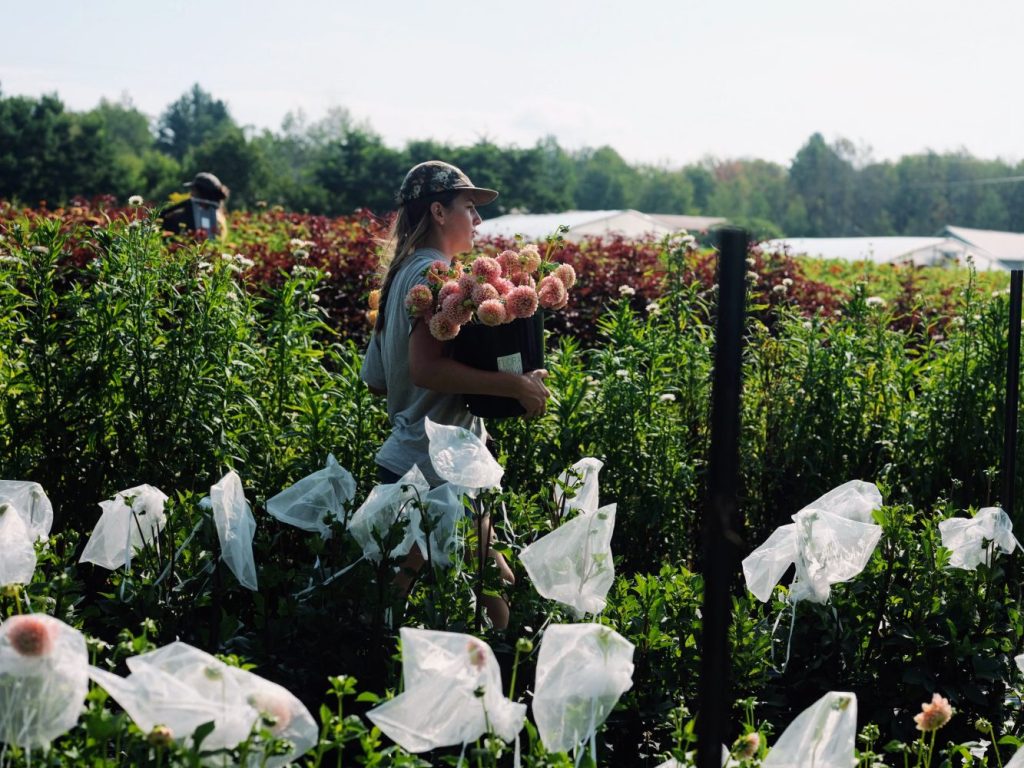
3. Market Analysis
A deep understanding of the local market is critical. You might follow some flower farms on social media, sometimes based thousands of kilometers away, and be blown away by their products and their success. But keep in mind that markets are very different from one country to another, even from one town to another. Learning how to start a cut flower farm involves not just growing flowers, but also researching prices, demand, and competition.
Prices per stem can be very different and customer tastes (and floral knowledge) too, so be sure to know the local prices before even starting to sow seeds and be ready to have to educate people if you are offering new kinds of flowers that people are not used to seeing (you should!). You have to know what you are going to grow and how much you can plan on earning per week, month, season, year, BEFORE growing anything. Get in touch with other farmers around your area and ask if they would be willing to share their price lists. Many organisations, such as flower farmer associations, do have price lists to share and are also valuable resources to keep learning and be in touch with the flower farming community.
Analyzing competitors and pinpointing what sets your farm apart is key. This research is especially valuable when starting a flower farm business, since standing out in the marketplace is crucial. A lot of people are getting into flower farming, and it’s super cool, but that also brings a lot of offers.
You have to stand out. Either by the varieties you grow, the color combinations you do, the time of the year you are selling flowers, the way you package them, etc.
What makes you different from other farms near you? (The answer is you! Put yourself out there!) Determining your unique selling proposition early (or as you go) can significantly impact your success. As you evaluate channels, map out how to start a flower farm business in your specific region.
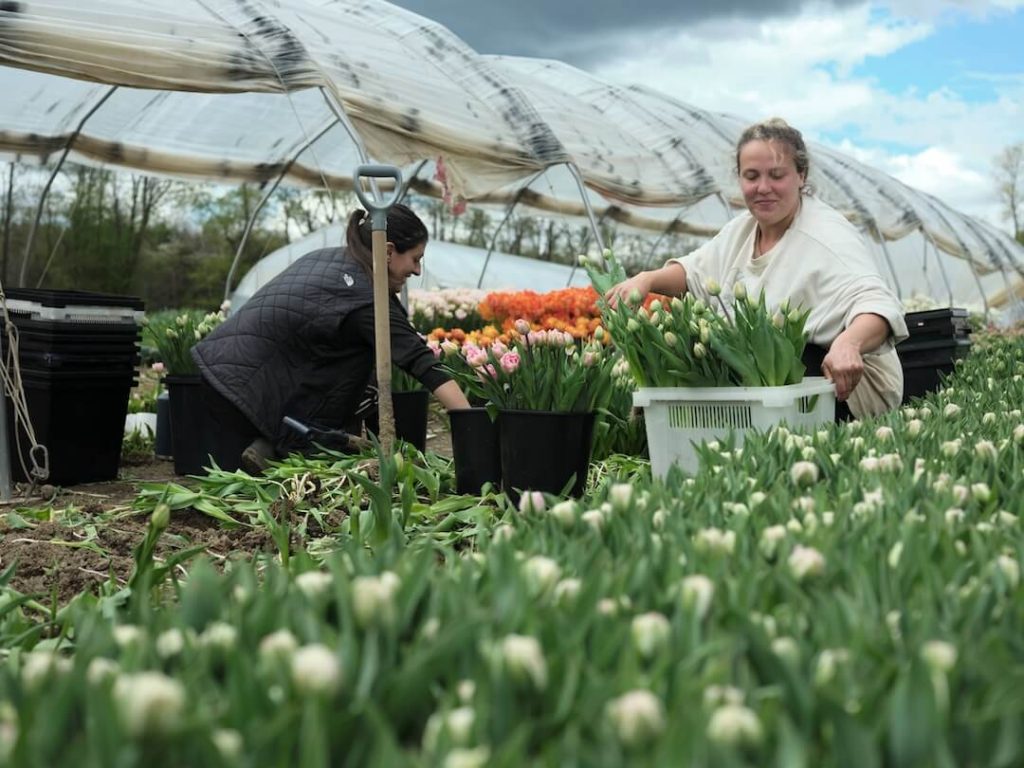
4. Financial Strategy
The backbone of any business is its financial strategy. Setting clear financial objectives and formulating a plan to achieve them are fundamental steps. Anyone exploring how to start a flower farm business should begin with a financial roadmap.
This encompasses managing startup expenses, production planning, and pricing strategies.
5. Startup Costs & Budget Breakdown
Many new growers wonder how much they truly need to invest to get started. The reality is that starting a cut flower farm can be done on almost any budget, but knowing where to allocate funds is essential. Early on, starting a flower farm business often means prioritizing essential infrastructure over nice-to-haves. You can start with as little as a few hundred dollars using recycled or DIY materials for a small project, or invest several thousand for a flower farm. Starting small is always a good idea. But small means you still need a lot of things, but in smaller quantities. In the first years (sometimes after that, haha!,) you will also need to get creative and try to think outside the box. Be able to make a lot of things work without the last gadget or tool available, and that means that stuff will be held with a lot of duct tape and/or bailing twine for a while!
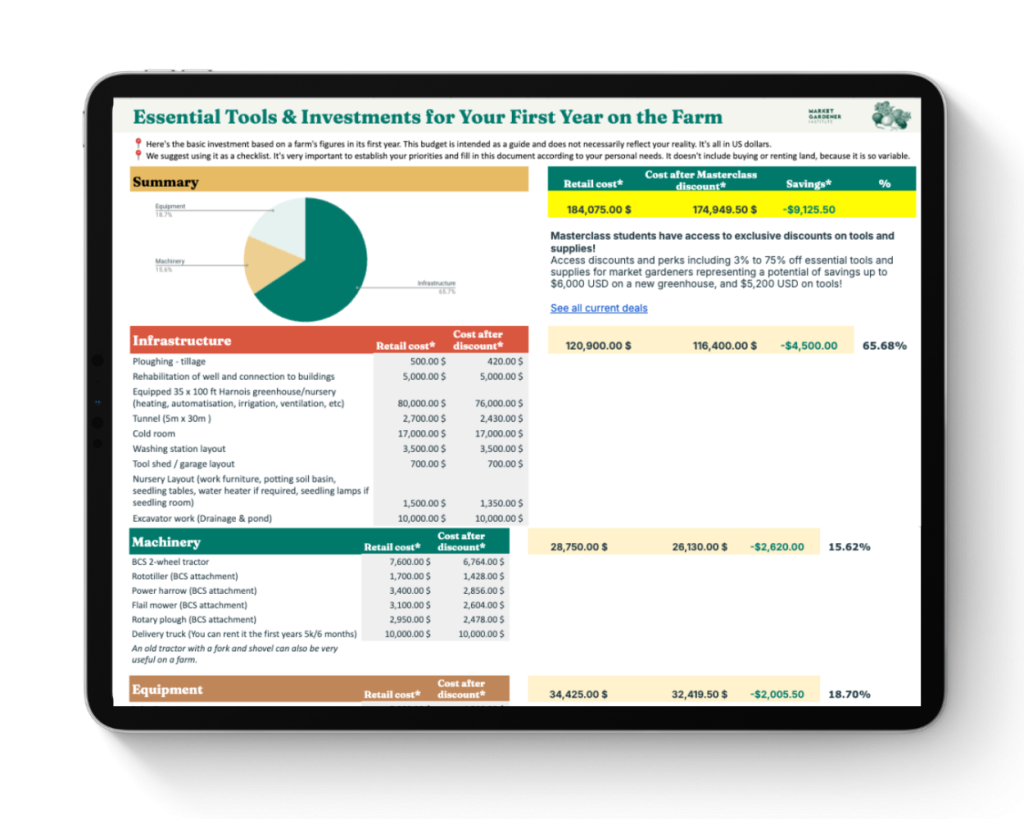
Not sure which tools to buy in year one?
We’ve created a free budget list of essential tools for first-year farmers. Save time and money by avoiding unnecessary purchases and focusing on what truly matters.
Also, the more you DIY, the less expensive; the more you hire people to make it done, the more expensive. Sometimes it’s not possible otherwise, but if you can invest time and money in learning basic manual skills (yes, women, I’m talking to you!), it’s going to pay off real quick and bring you so much satisfaction. You can do (build) it!
While costs vary widely, here are some essential startup needs for a flower farm:
- Land (owned or rented) with a water source
- Studio/barn with clean water and accessible by car
- Seed-starting setup (seeds, potting soil, greenhouse, heater, irrigation system/water tank/pump, tables, trays, manual seeder, name stick/tape)
- Fertilizer and compost
- Basic tools (toolshed, shovel, pruners, wheelbarrow, weeding hoes, lawn mower, support netting, metal stakes, hammer, occultation tarps, rock bags, rope, long measuring tape, insect netting, T posts)
- Irrigation supplies (main lines, main pump, drip tapes, connectors, camlocks, steel clamps, sprinklers, filters, pressure regulators, screwdriver, cutter)
- Harvest supplies (table, buckets, water, traveling/delivery crates, snips, elastics, carts, cooler or cold room)
Packaging material (sleeves/kraft paper, elastic, business cards, - Delivery car/van
*** You can start without it, but you can’t go on the long run on a farm of a substantial size without a BCS/tractor and implements (powerharrow, rotary plow, flail mower, rototiller)
The Floramama Flower Farm Budget Template
Ever wondered what it really costs to run a profitable flower farm?
Now you can see exactly how one of Quebec’s most inspiring small-scale flower farms manages it all, and use their model to plan your own.
How To Start A Flower Farm On A Production-Level
1. Education and Experience
Knowledge is the first step towards a flourishing flower farm. Acquiring a fundamental education in both agriculture and business, and gaining practical experience by working on an established farm, are invaluable. For beginners, how to start a cut flower farm often begins with internships or seasonal work to learn best practices. This combination of hands-on experience and theoretical knowledge will equip you with the necessary skills for managing your production effectively.
And remember, nobody will ever know it all; it’s a lifetime ongoing process. You will always have to put time into researching and learning.
With that being said, hire an agronomist to help you build your soil and prevent or treat pests and diseases. No good farmer is doing it without an agronomist.
2. Focus on Profitability and Crop Selection
It’s easy to be drawn to the most beautiful flowers, but not all are financially viable. Some crops are labor-intensive or produce low yields, while others are consistent top work horses. As a rule of thumb, keep profitability in mind when building your planting calendar:
- Maximize each bed’s potential by choosing flowers that have a high price per stem (usually focal flowers)
- Choose a color palette for your season and stick to it
- Choose some flowers that can be succession planted or cut multiple times (zinnias, snapdragons, sunflowers)
- Avoid gaps in production by coordinating successive plantings.
- Rotate crops to maintain healthy soil and prevent pest cycles.
- Align harvests with your sales calendar, CSA drop-offs, or market days.
- Plan labor needs and reduce stress, knowing what’s coming week by week.
Profitability in small bio-intensive farming isn’t about scale; it’s about efficiency, meticulous planning, and intelligent design by prioritizing high-turnover crops, tight crop planning, and a no-waste mindset. Every tool and bed is intentionally chosen and mapped, with crop successions planned months ahead. Build efficient systems before you build acreage and keep your vision grounded in numbers.
For a deeper dive into which crops consistently perform, see our Guide to the Most Profitable Flowers to Grow and Sell which explains how profitability varies by location, climate, market demand, and production techniques, and includes a video walkthrough.
3. Sustainable Practices
Implementing eco-friendly cultivation methods benefits not only the people and the environment but also serves as a powerful marketing tool. Consumers increasingly prefer flowers that are sustainably grown, reflecting a growing consciousness about environmental impact. Be prepared to share what it actually means to your customers. They often are not aware that the flower industry is degrading nature and people’s health. So sharing about your growing practices, the absence of chemicals, and the emphasis on biodiversity is a great way to connect and build strong bonds with flower lovers.
4. Lean and Frugal Startup Mentality
Starting a farm is not one size fits all.
Many say you don’t need a tractor, greenhouse, or large acreage to start. Still, those starting a flower farm business should aim to maximize efficiency, even on a small plot. Some successful growers begin in their backyard, front yard, or even in containers. They repurpose old trays, build seed-starting shelves from salvaged wood, and start with easy-to-grow varieties like sunflowers or zinnias.
Again, building slowly and reinvesting profits into infrastructure helps your business grow sustainably without taking on unnecessary debt. When starting, time is your currency; you should rapidly be able to upgrade based on your decisions, obtain a better quality of life and switch to money as your currency.
Starting a business is like playing chess to me, you have to take risks, make the right moves and take the right decisions that will bring you where you want to be. And sometimes, this means investing early in more expensive infrastructures that will make you gain time, but also, and particularly, energy. Mentally and physically. Because trying to work indefinitely in messy and non-ergonomic setups will burn you up in the long run. When infrastructures are making you lose time and get frustrated, you simply avoid the tasks more and more, and it feels like doing it backwards.
Flower farming should be fun! Hard but fun! I highly recommend investing in a greenhouse and a cold room, the very first year, and then hoophouses that are simply money makers.
I also recommend using your infrastructure to the maximum capacity before upscaling. So, for example, before sowing any seeds the very first year, I transformed a horse box into an insulated room in which I installed a CoolBot as a cold room. It did a great job for the first 4 years. The last 2 years of using it were really too small for what I needed, but I still jam packed it and used every inch of that room. I was able to save money and then invest in a much larger proper walk-in cooler that would suit our needs to double the production every year for a couple of years.
And I know that investing (sometimes big) money can be frightening or unusual to some of us. Don’t be scared. Do your homework and do the maths. Budget everything and be sure to be able to pay off your investments with your upcoming sales. It’s worth it!
Start with what you can manage. What’s essential is a firm understanding of your finances. A well-crafted business plan serves as both a financial compass and a reality check, guiding you to outline your crop strategy, project expenses and income, evaluate local demand, and establish your market channels. If you’re looking for how to start a flower farm business with minimal resources, a lean startup approach is the way forward.
Allow your business to grow slowly but steadily, just like your flowers and yourself.
5. Time and Labor Realities
Flower farming is deeply rewarding but undeniably labor-intensive. During peak season, it’s common to spend 20–40 hours a week on tasks such as:
- Weeding
- Tracking/treating for pests and diseases
- Harvesting
- Bouquet-making
- Bed prep and irrigation
- Delivering
But also 20-40 hours a week on sales and management tasks such as:
- Answering emails
- writing newsletter/blogs
- Sending out availabilities and taking orders
- Do the accounting
- Paying employees
- Managing website
These numbers will wildly vary from one project to another, depending on the size of the farm, of course. Still, starting a flower farm business means being prepared for both physical fieldwork and demanding administrative tasks. That also means that at a certain level, you can’t do it all alone; you WILL need help to get it done. But as the business owner, and no matter how experienced your employees are, remember that you will always be the one who hustles the most, who is the most passionate about the farm and is the best to share the brand.
Navigating Marketing
Building an Online Presence
In the digital age, an effective online presence is indispensable. Utilize social media, an engaging website, and newsletters to promote your farm and connect with your audience.
Flowers are all about beauty, so sharing that beauty in the best way of your capabilities is crucial. If you don’t feel confident in taking good pictures, there are plenty of online courses that can give you easy and basic skills to elevate your game.
Marketing extends beyond sales channels; it’s about your identity. Customers aren’t just purchasing flowers; they’re investing in values like freshness, transparency, trust, and community. Your unique story, farming philosophy, and connection to the land are invaluable assets for attracting and retaining clientele. Our live course Digital Marketing for Farmers was created specifically to help growers strengthen their online presence, attract loyal customers, and turn visibility into consistent sales.
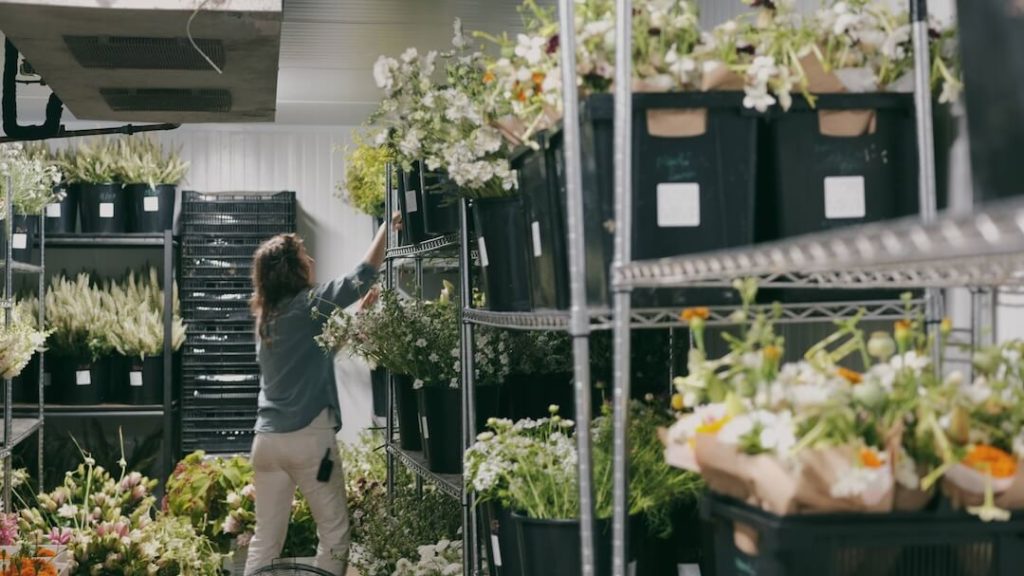
Starting a Farm: Q&A
How Much Does It Cost To Start A Flower Farm?
There is no magic answer for that kind of question! Every project is unique, every setup, economic and cultural environment is different. And what is considered a flower farm? 10 beds? Half an acre? 3 acres and 10 greenhouses? When starting a cut flower farm, your costs may range from a few hundred to several thousand depending on your setup.
What I can say is that it’s possible to start at any budget, big or small, but you have to ask yourself, “What is really necessary to start off?” and begin with that.
For me, it was:
- Renting a piece of land with a barn and all amenities – 700$/month
- Buying 2 second-hand 50’X20’ greenhouses (one heated), disassemble and reassemble myself and new plastic for both of them, sum pump and water tank – 6300$
- An electrician to bring electricity to the greenhouses and the irrigation system – 500$
- Building a cold room with a CoolBot out of a horse box – 2500$
- Buckets, stamps, kraft paper, elastics, snipers, graphic design (my father), 1 photograph session (a friend) – 1800$
- Seeds, compost, seedling soil, fertilizer, seedling trays, wooden seedling trays, homebuilt – 1200$
- Irrigation system, water pump – 2300$
- Weeding hoes, gloves, kneepads, wheelbarrow, shovel, broadfork – 800$
- Renting space at the farmer’s market – 50$/week
- Gas for weekly delivery – 25-50$/semaine
Total (for a season of 4 months): 19 250$
Essentials that didn’t require direct investments:
- Already have learned how to make beautiful pictures and manage social media
- Already having a van that could serve for the deliveries
- Having put the time and effort to make contacts to know where I would sell the flowers even before having sown 1 single seed
- I already had woodworking tools
- I already had basic knowledge (and a whole lot of determination!) to build the things I needed
Keep in mind that this was only the first year and that we DID make further investments each year after that. We chose a slow and steady growth for the business.
Some people have bigger budgets or access to grants, making it possible to jump-start the game with a wider range of equipment and permanent structures right away.
Do Flower Farms Make Money?
Yes sure! BUT!
A flower farm is primarily a business and has to be thought of and run like a business. That’s why understanding how to start a cut flower farm with profitability in mind is so important. Everything planned ahead (yes, the whole season!), numbers (in and out) are regularly looked at (every week or so) and make adjustments quickly if needed, tight production (little waste) and flowers are sold “in advance”.
Which Flowers Are The Most Profitable?
For me, focal flowers are the most profitable. Especially lisianthus, ranunculus, tulips and dahlias. We can plant the crops really tight (except dahlias) and get the most money per square foot because we benefit from high prices per stem for those in our local market. People are so excited to see them coming each year, which makes them sell real quick, and we absolutely love these crops ourselves, so we take good care of them and are proud to sell them.
But the flower market is different everywhere; some flowers are not worth that much in some areas, while worth a lot in others.
The logic behind a profitable crop is that it brings a global value to your business.
It’s not only the yield, but by factors like the investments to grow it, the days it stays in the garden and the space it takes on your farm, the popularity or rarity of the crop/color, the price per stem in your local market, your personal appreciation of this flower and time investment (especially to harvest it).
Discover Floramama’s top 5 most profitable flowers in my Guide to the Most Profitable Flowers to Grow and Sell!
How Many Acres Is Needed For A Cut Flower Farm?
Again, there is no perfect model. It all depends on your financial needs and expectations. Some people starting a flower farm business succeed on just a quarter-acre, while others expand to several acres with employees.You have to keep in mind that farming is very difficult physically and mentally, and that the bigger the harder, so be sure to have the help you need (aka employees) if you want to go big.
I would say that with the right mind, tools and planning, you need 1 to 2 people full-time per half-acre to grow and sell professionally.
At Floramama, I began alone with a ⅓ of an acre and then doubled the surface area (thus the investments) for a couple of years until we reached 1.5 acres and 6 employees. That was amazing, but also very big, and everything had to go very fast to be efficient.
Starting a flower farm is an ambitious project that requires thorough preparation and commitment. Following these guidelines will help you lay a solid foundation for your flower farming enterprise. If you’re still unsure about how to start a flower farm business, remember that progress comes step by step, season by season.
Every grower starts somewhere, and often with less than perfect conditions. Grow into your vision over time.
If you’d like to deepen your understanding of different flower categories and perfect your cut flower growing techniques, our online course The Flower Farm is an invaluable asset. Whether you’re a beginner or a seasoned grower, this course will provide you with the knowledge and tools you need to successfully grow a wide variety of flowers, ensuring abundant harvests and a garden vibrant with color all year round.

